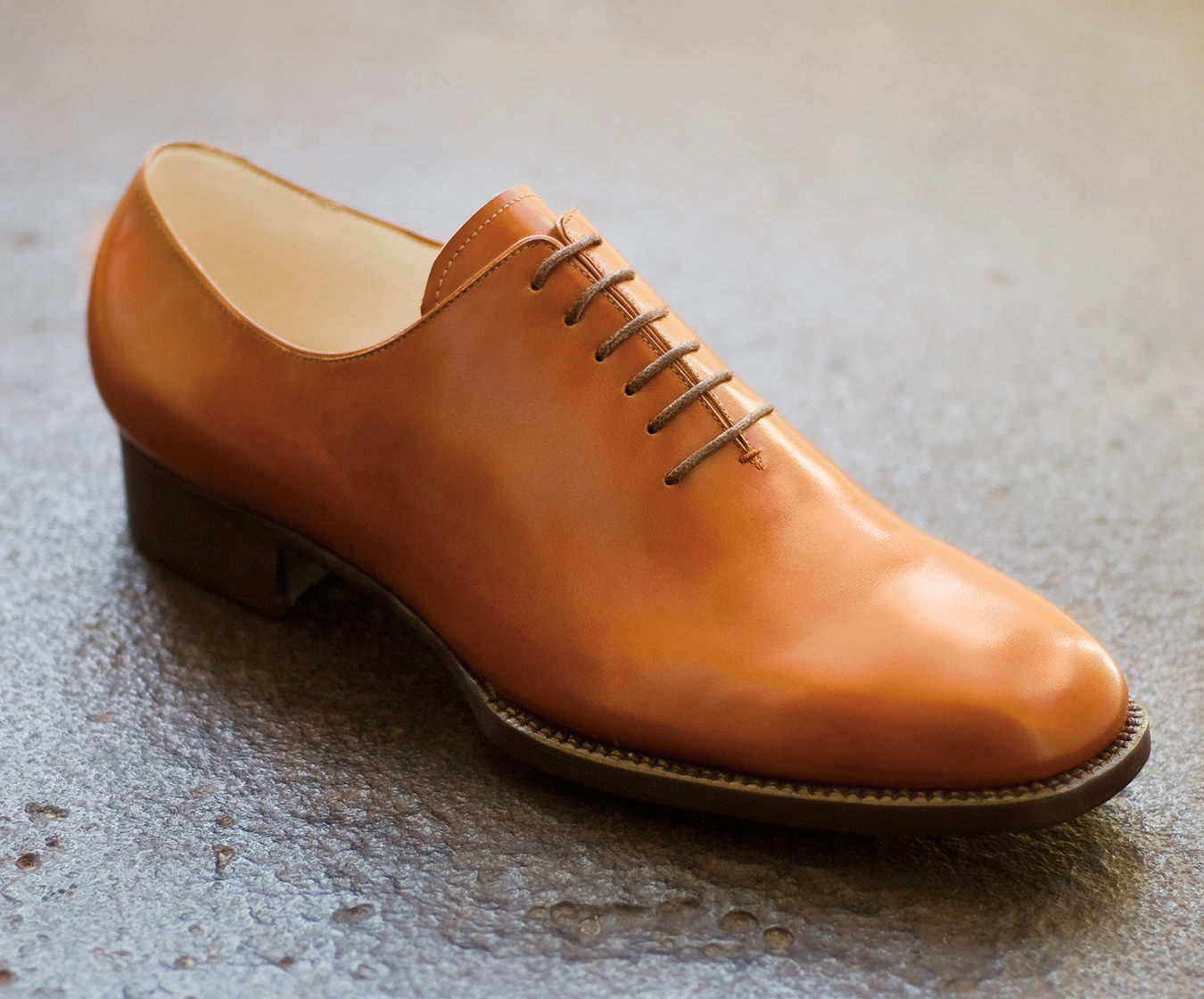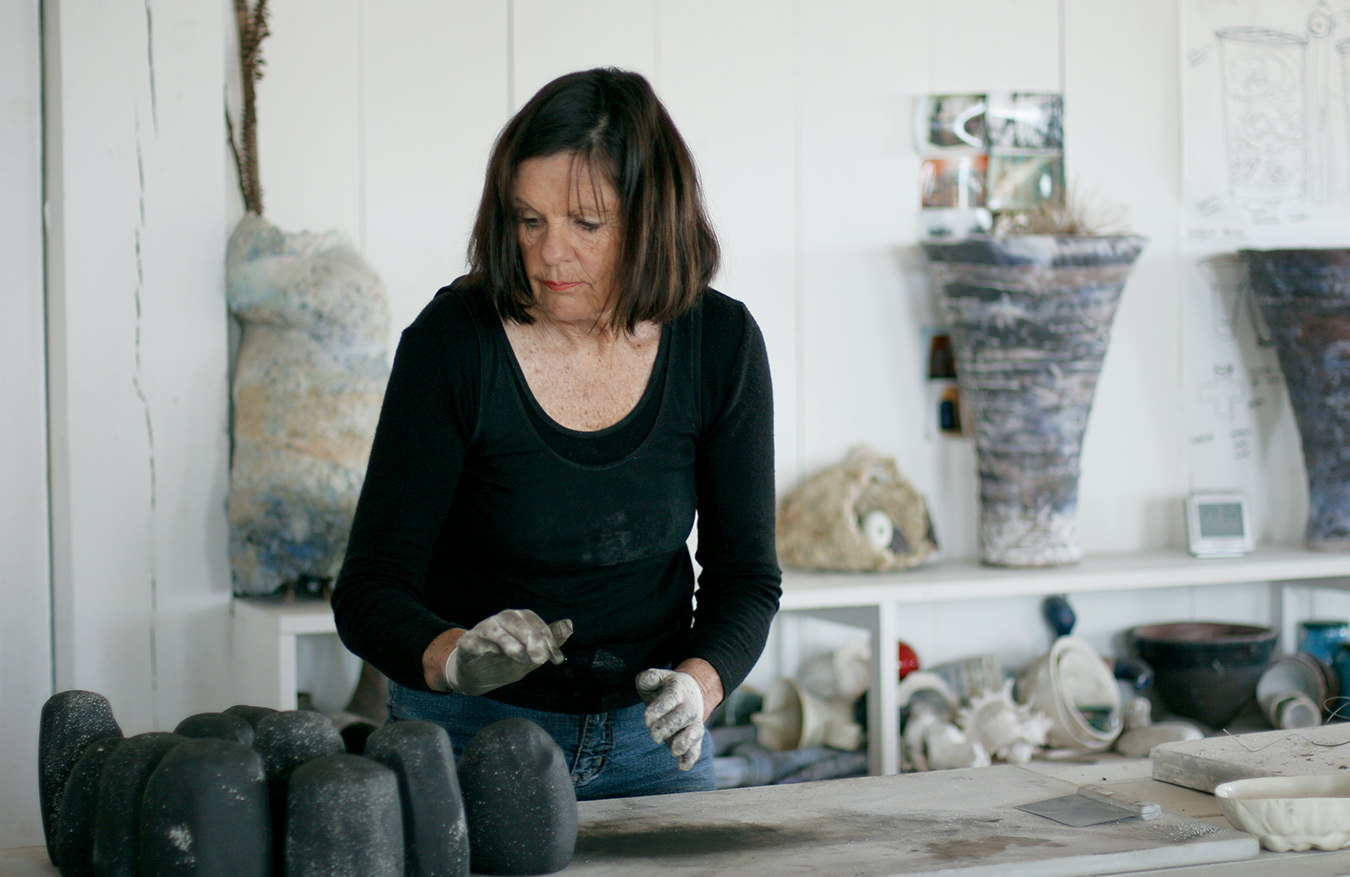The Irreverent Artistry of Hannah Hanski
“I wish people knew that rug hooking is actually very hardcore, very metal.”
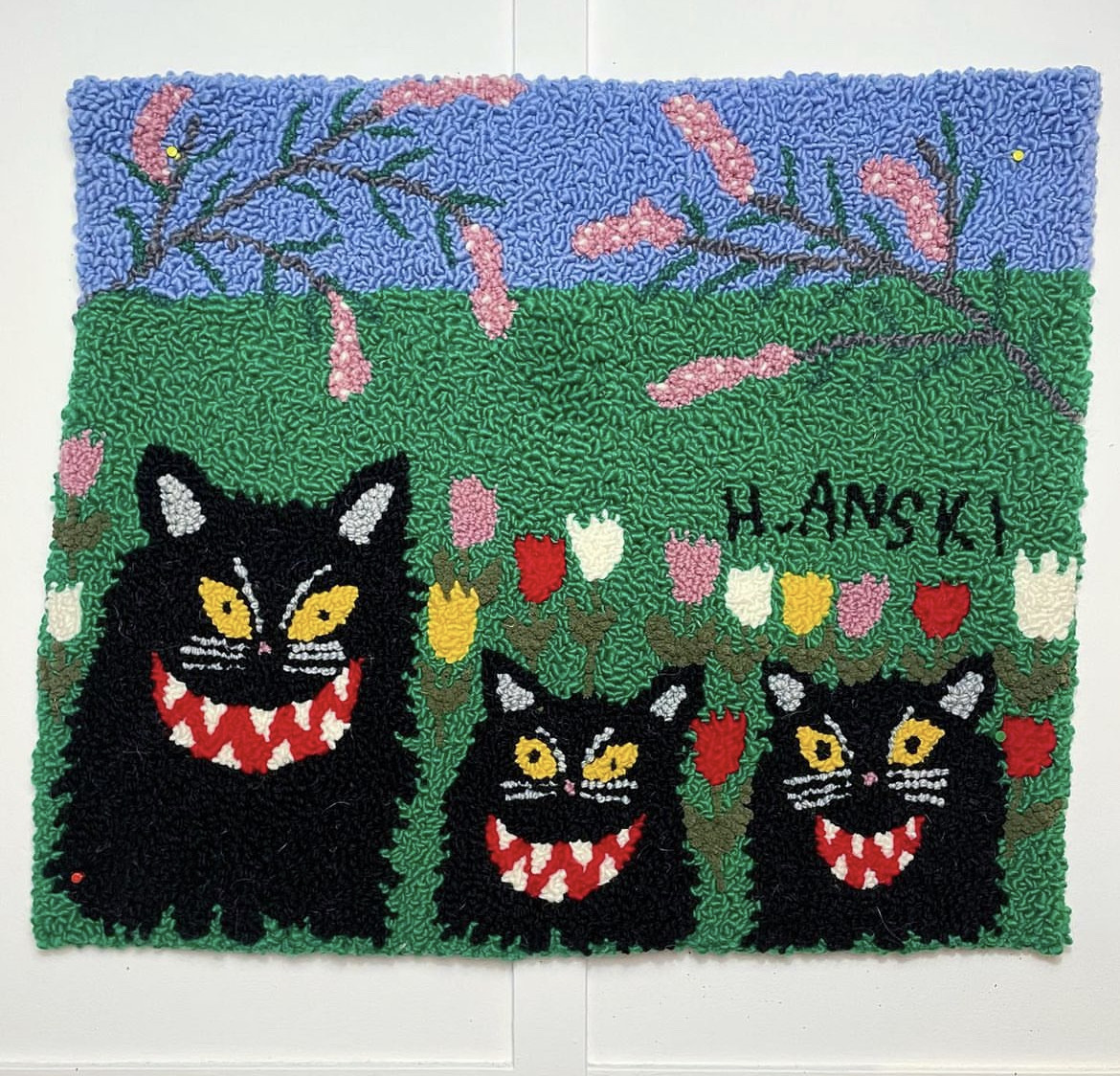
When Nova Scotian artist Hannah Hanski decided to move to Toronto at 25 to pursue art professionally, she chose rug hooking for three reasons. First, it was a natural continuation of her interest in folk culture and folk aesthetics (she studied folklore at Memorial University). Second, she observed that it was an underused medium that lent itself well to comedy. And finally, in the words of the artist, “I thought it would be completely hilarious in the vein of deep absurdity. Should I succeed in becoming a famous artist with hooked rugs, I could tell everyone I was a hooker.”
Comedy and absurdity are the through lines of Hanski’s work. Her colourful, cartoonish digital-media textiles depict shaggy monsters with pointy fiendish grins, creatures and humans alike partaking in various explicit acts, and folksy interpretations of household characters like the Simpsons and SpongeBob SquarePants.
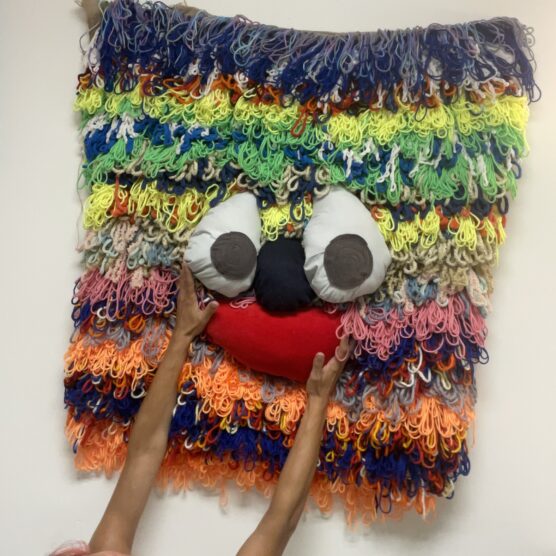
But Hanski asserts, “I don’t care at all about textiles,” a stance that’s hard to convince her audience of since so many of her pieces are created using rug hooking. “The quick read is always, ‘Here is another woman making textiles, this must be feminist, this must be an argument for craft as fine art, etc.,’” she says. “This is not my intent. For me, textiles, specifically hooked rugs, have been a vehicle for climbing out of poverty and side-stepping into the art world.” So rather than examining the materials she works with, she encourages her viewers to engage with the performances she makes as an artist and the messages she conveys with them.
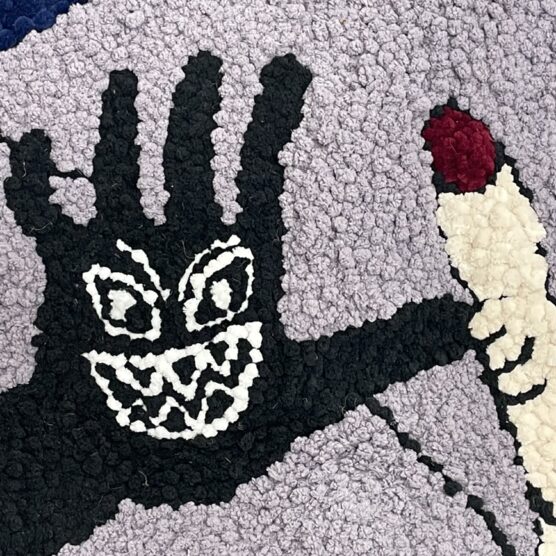
Growing up in Nova Scotia, art was a constant in the background in her life (her mother was the head librarian at Nova Scotia College of Art and Design, and her father, a “bit of a local playboy,” dated a string of artists), but Hanski wasn’t particularly interested until she visited London’s Tate Modern at 14. One installation in particular, Claes Oldenburg’s giant electrical plug hanging from the ceiling, attracted her. “Unlike all the other art I had been exposed to, much of it humourless, this piece made me laugh in a new-to-me existential way. It was absolutely bombastic in its absurdity,” she recalls. “Someone was speaking to me through the piece, and they were saying, ‘You, too, could be this absurd.’ It seemed clear to me that it was the only way to be.”
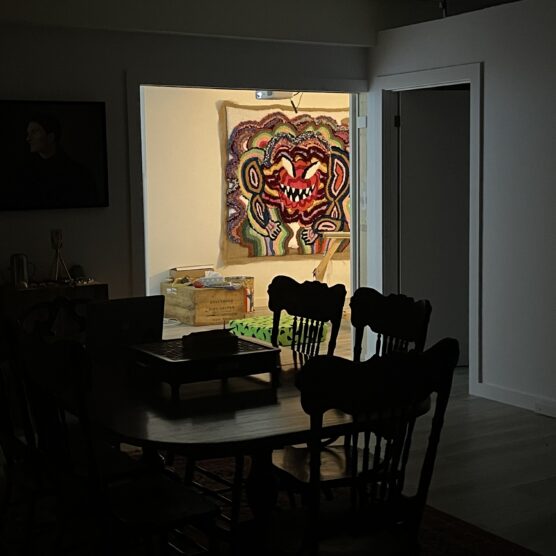
After completing her MFA at Carnegie Mellon University in 2017, Hanski moved to Los Angeles to be with her then-boyfriend, who had recently sold his app company to Snapchat and made millions. Bolstered by representation with a L.A. gallery and the comforts of having a rich partner, Hanski was living a dream. That is until, seven years into their relationship, her boyfriend took her out to a steak dinner and dumped her. “This was unbelievably devastating. I really thought he was my soulmate, not to mention I had been instrumental in the creation of the app that had made him rich,” she says. “But now he was done with me, and I was left without any recognition or ground to stand on. So my life absolutely fell apart—I suddenly had nothing, truly nothing.” Hanski retreated home and weathered the pandemic renovating an old church on the south shore of Nova Scotia, which she describes as a “secret mini-Berlin, full of cool ass kids and a killer art scene,” into a home, studio, and gallery space.
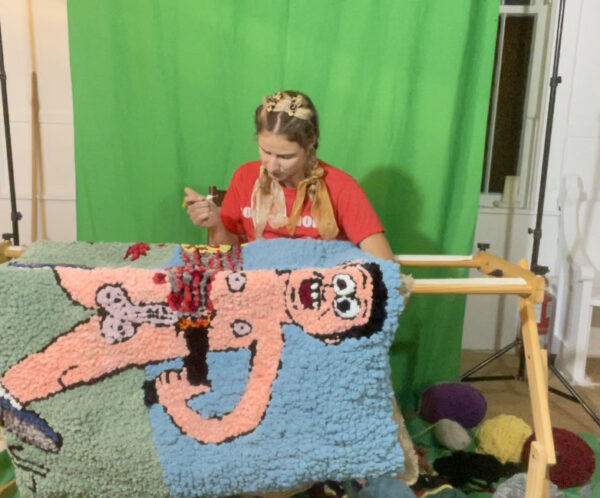
Now, Hanski has carved out a name for herself as a neofolk artist and technologist (a title she’s settled on for now, though she’s constantly searching for the right words to encompass what she does), making wacky and wild irreverent pieces that compare traditional storytelling practices with the technology-driven communication of today. The art world has taken note. Hanski has exhibited at the Hammer Museum, the Art Gallery of Ontario, Arsenal Contemporary, Steve Turner Gallery, Museum of Contemporary Art, and many others across the world, and her work is in the collections of Demi Lovato and real estate mogul Jorge Pérez.
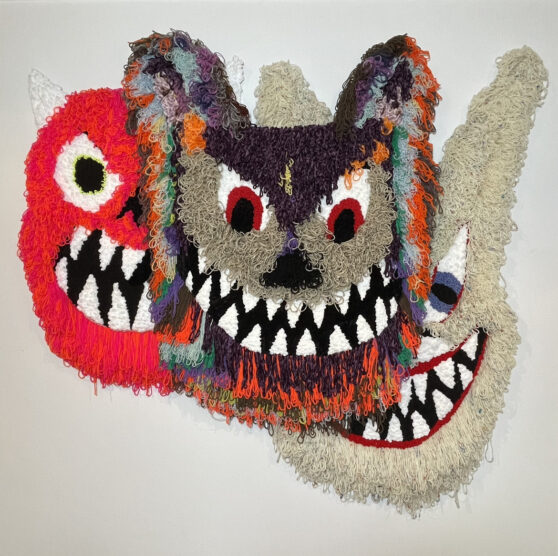
Lately, Hanski has become frustrated with the limitations of being a gallery artist. “If you make a hit piece, they just want you to make the same thing over and over,” she says. “I really entered the art world in such a naive manner—I had no sense of my own power—but now I’m allowing myself to pivot towards new experiments, even if they go against the ‘brand’ I’ve created for myself.”
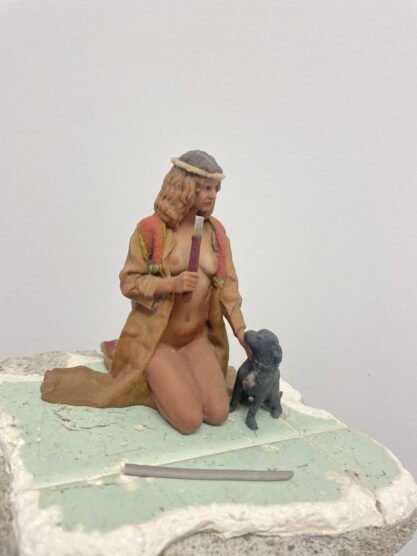
All her work includes some sort of performance—the making of her large hand-hooked rugs are a physical feat of their own. “Everyone always wants to ask, ‘How long did that take?’ and I am now 13 years into doing the same, repetitive action that has yielded hundreds of unique, provocative images, all surface level floaters for my anger and angst. Every piece I’ve made has taken my entire life.” During a recent trip to L.A., Hanski spent a month holding auditions to cast someone as herself and someone as her ex as a type of performance art. “The entire project is the auditions themselves, as they were an exercise in externalization,” she explains. “By making women pretend to be me and making men act as my ex and say the things I want him to say, I think I invented a new form of therapy. I learned no other female can play me, but any guy can throw on a black hoodie, act superior, and be my ex.”It’s unexpected, a bit unhinged, not for everyone, and as always, a bit absurd. But it also raw and speaks to some wild human emotion most people would be too afraid to share—like so much of Hanski’s work. “I have a monkey mind, but the monkey is pretty damn smart and funny and produces a lot of poop to sling. I wait to see what sticks,” she says.
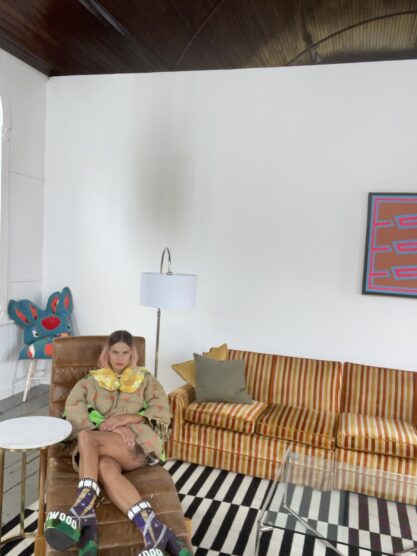
Though Hanski says she’s thinking of selling the converted church soon, for now, she continues to host the occasional event, with the next opening, curated by Andrew Cairns, on Friday, October 27. “Come through,” she says.

